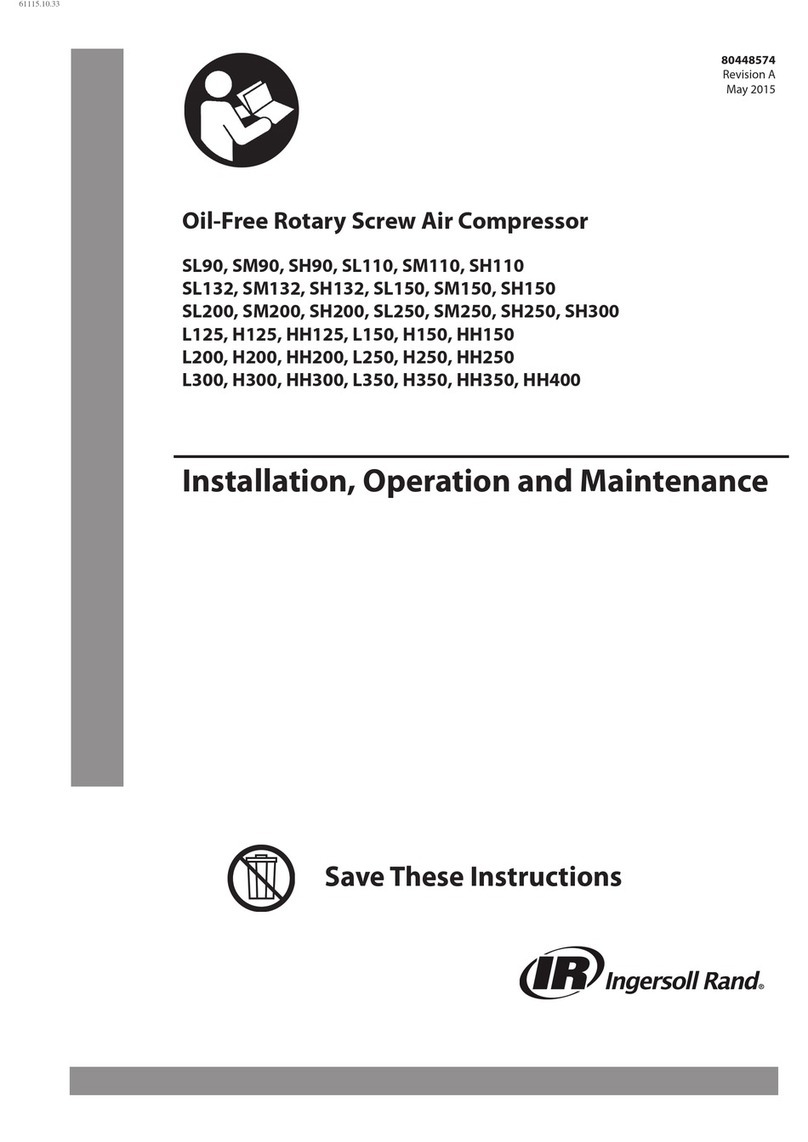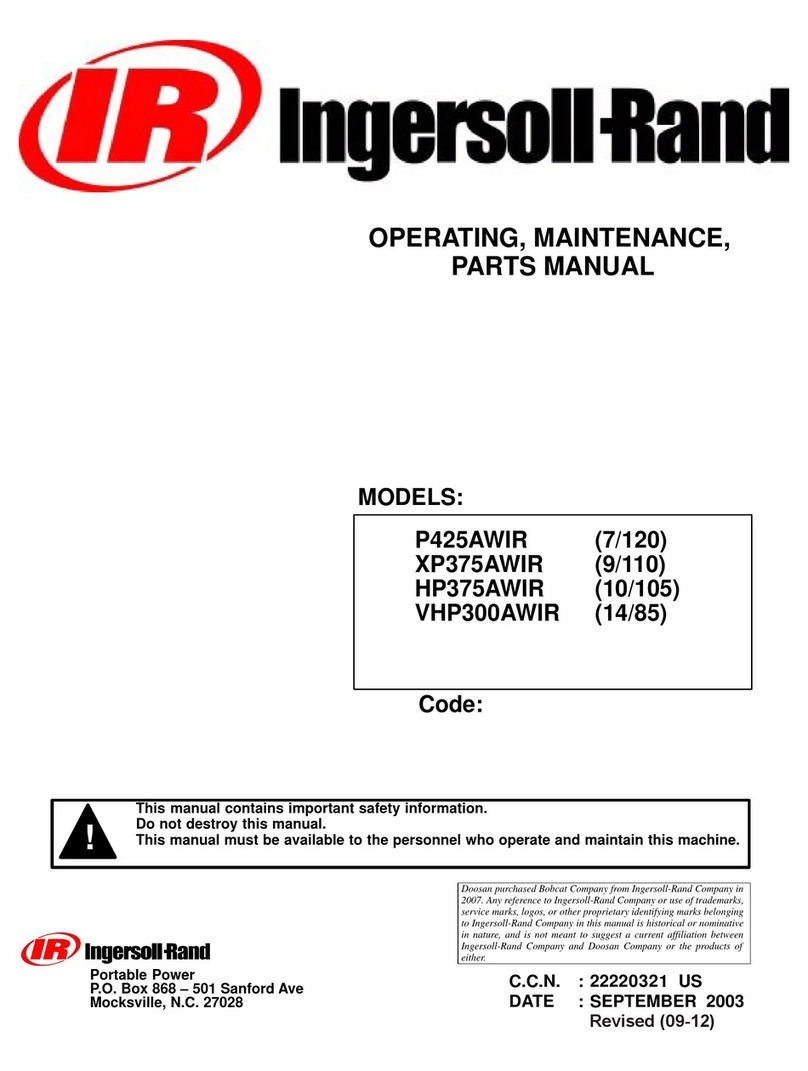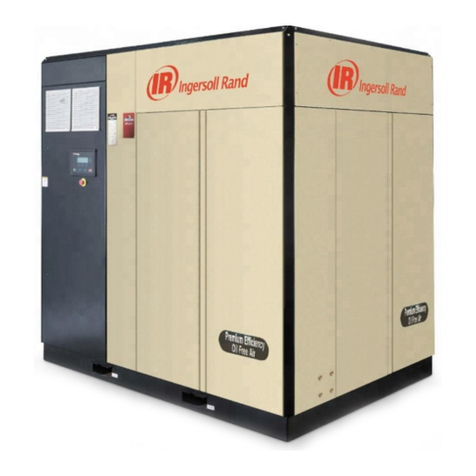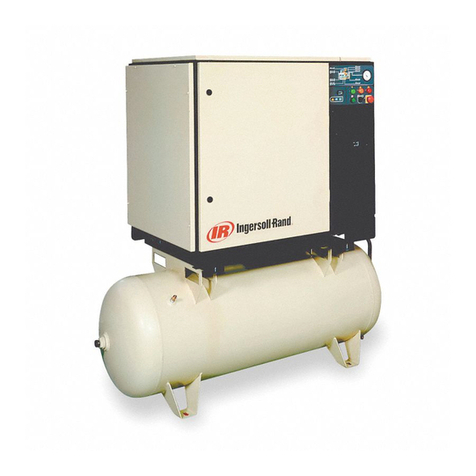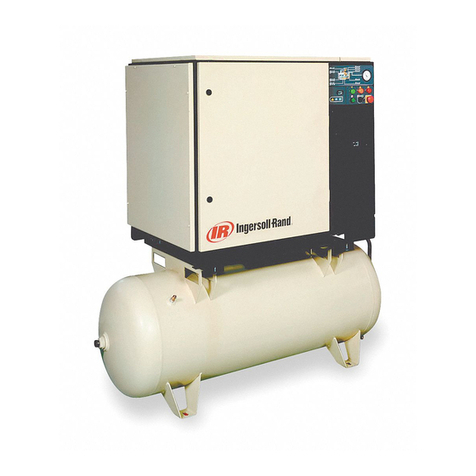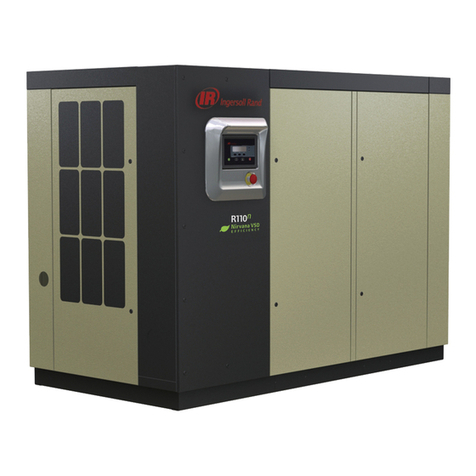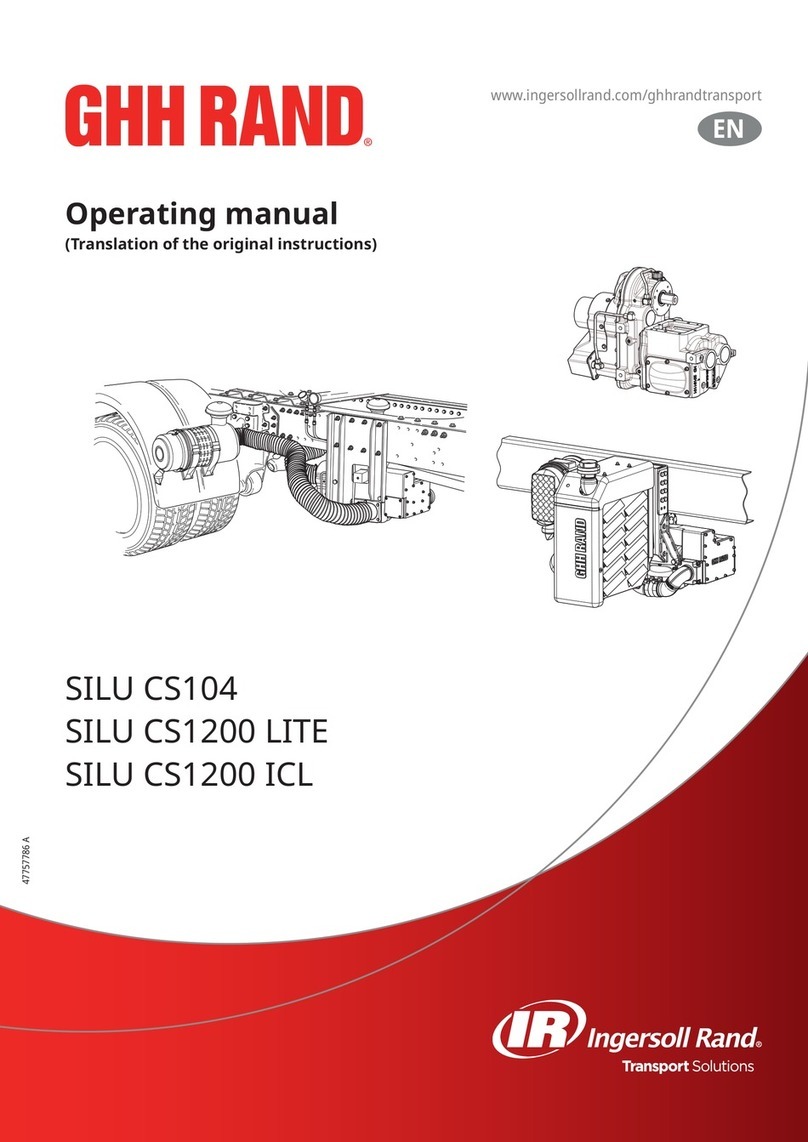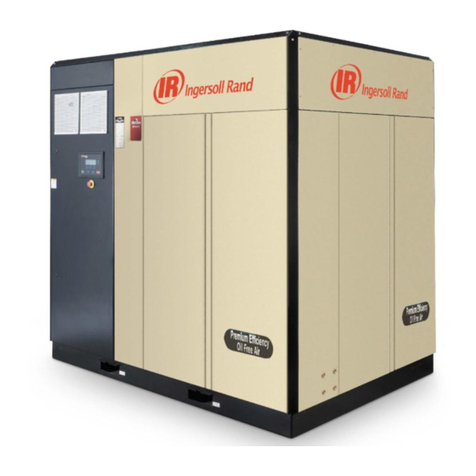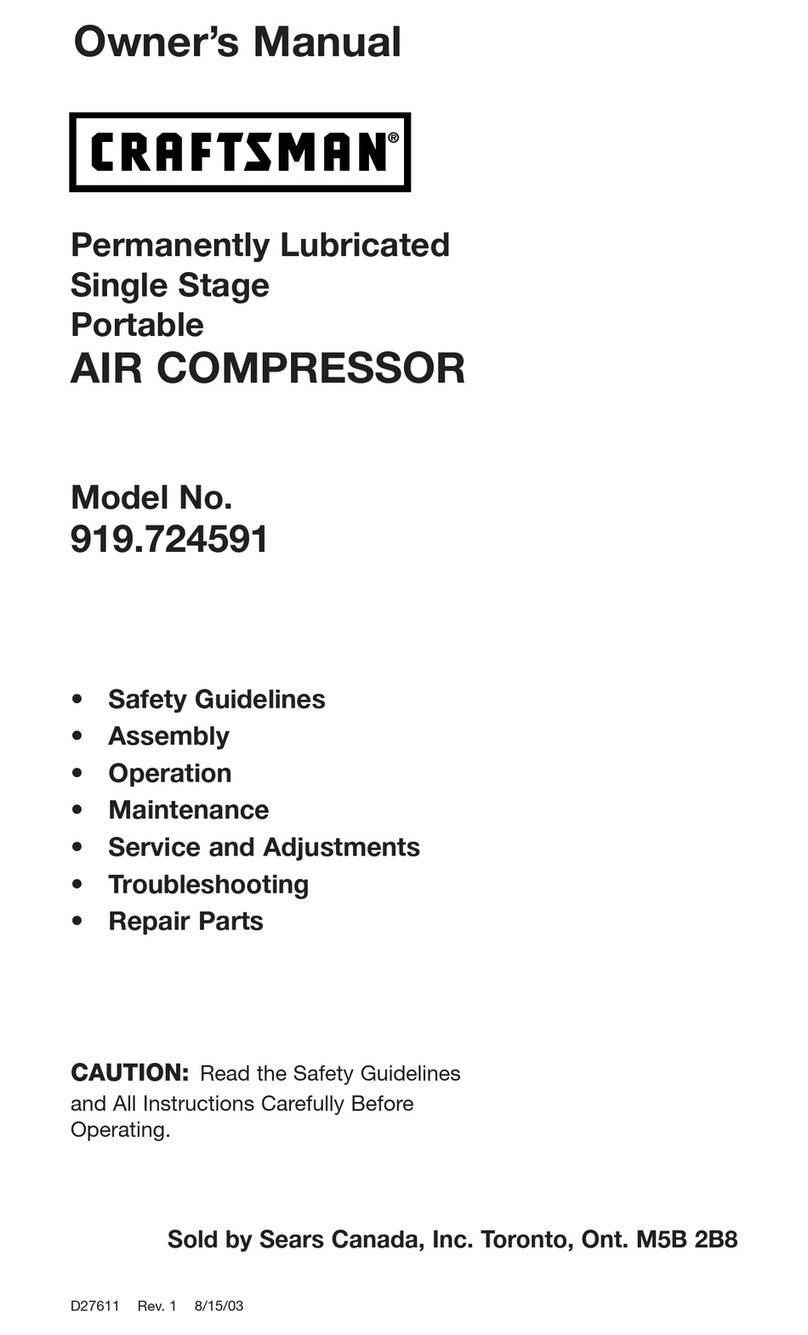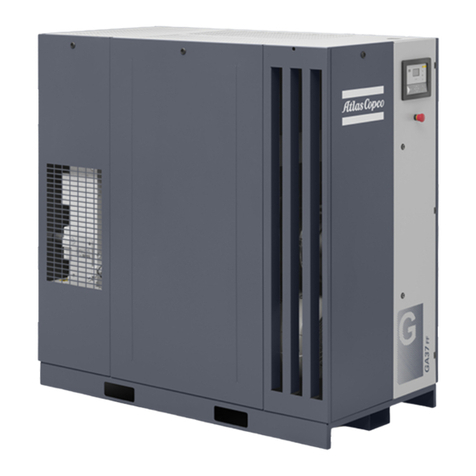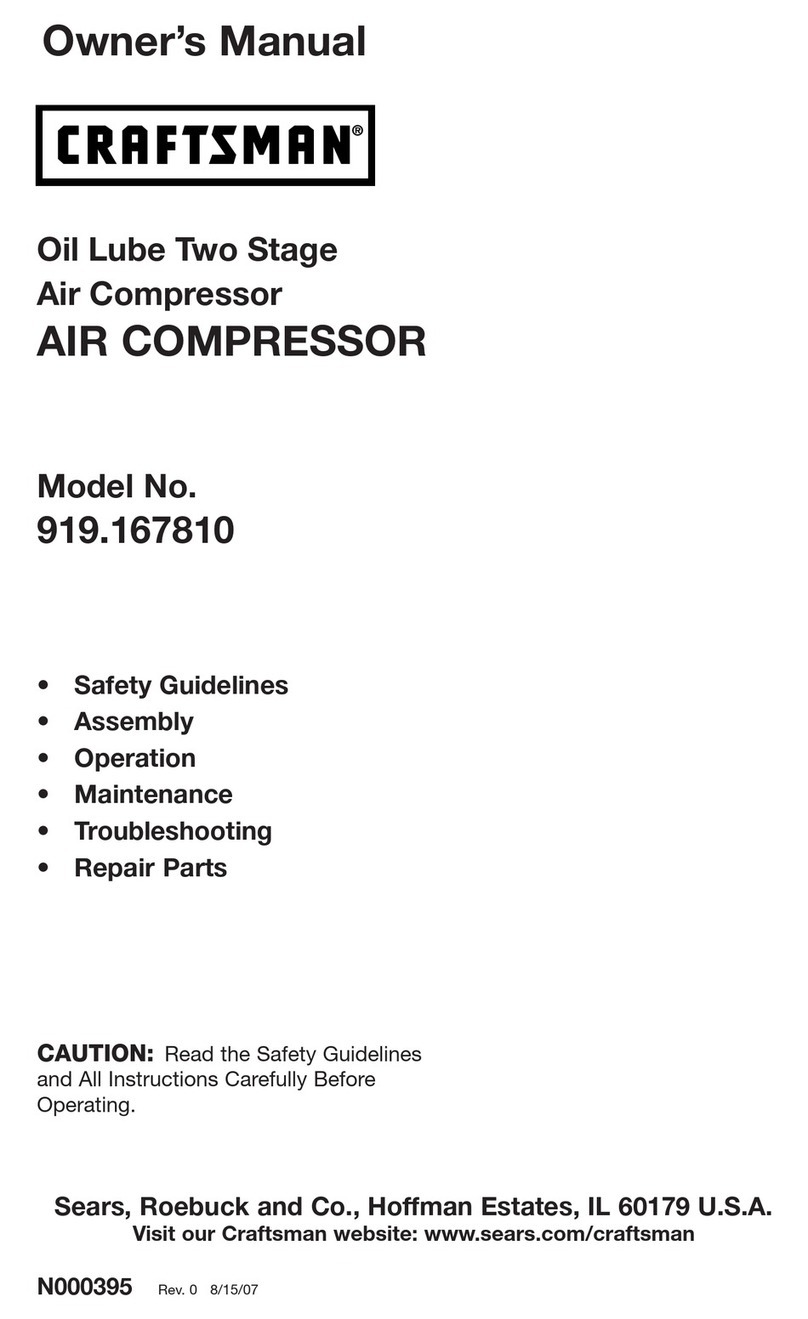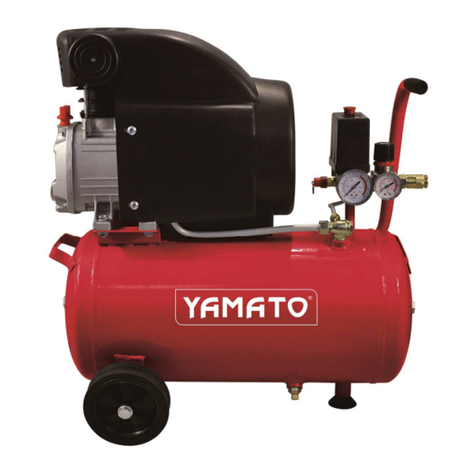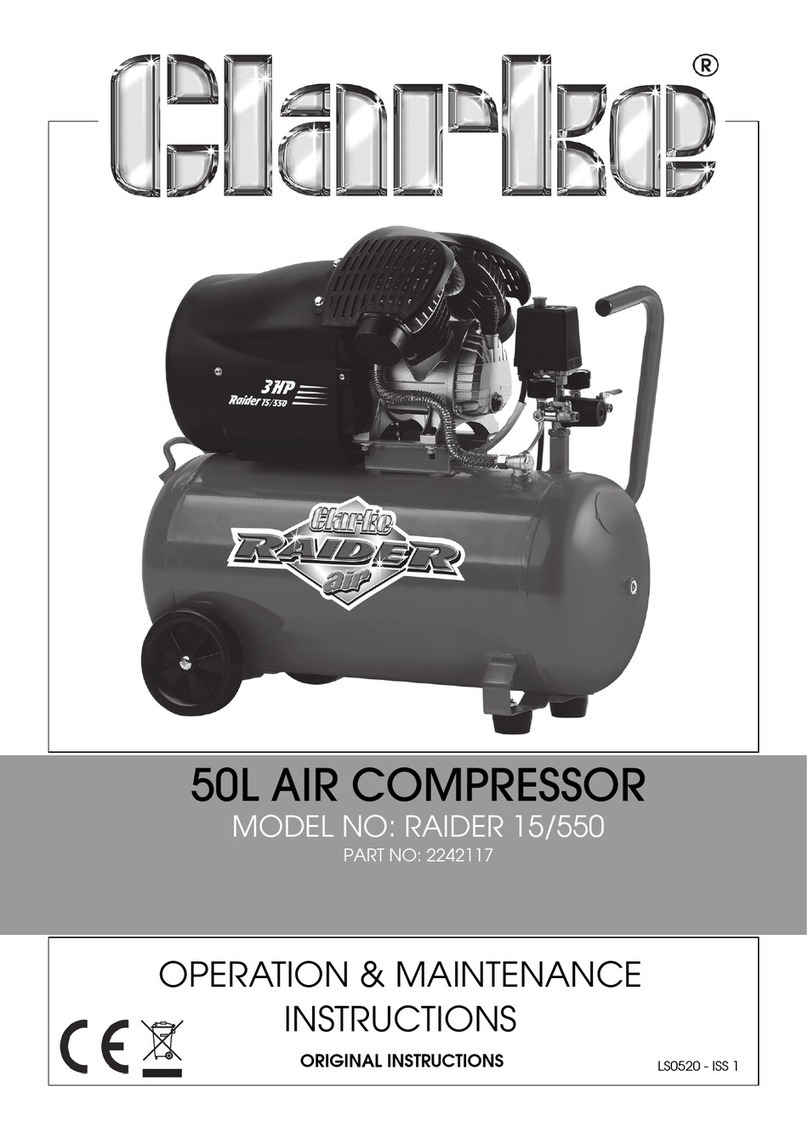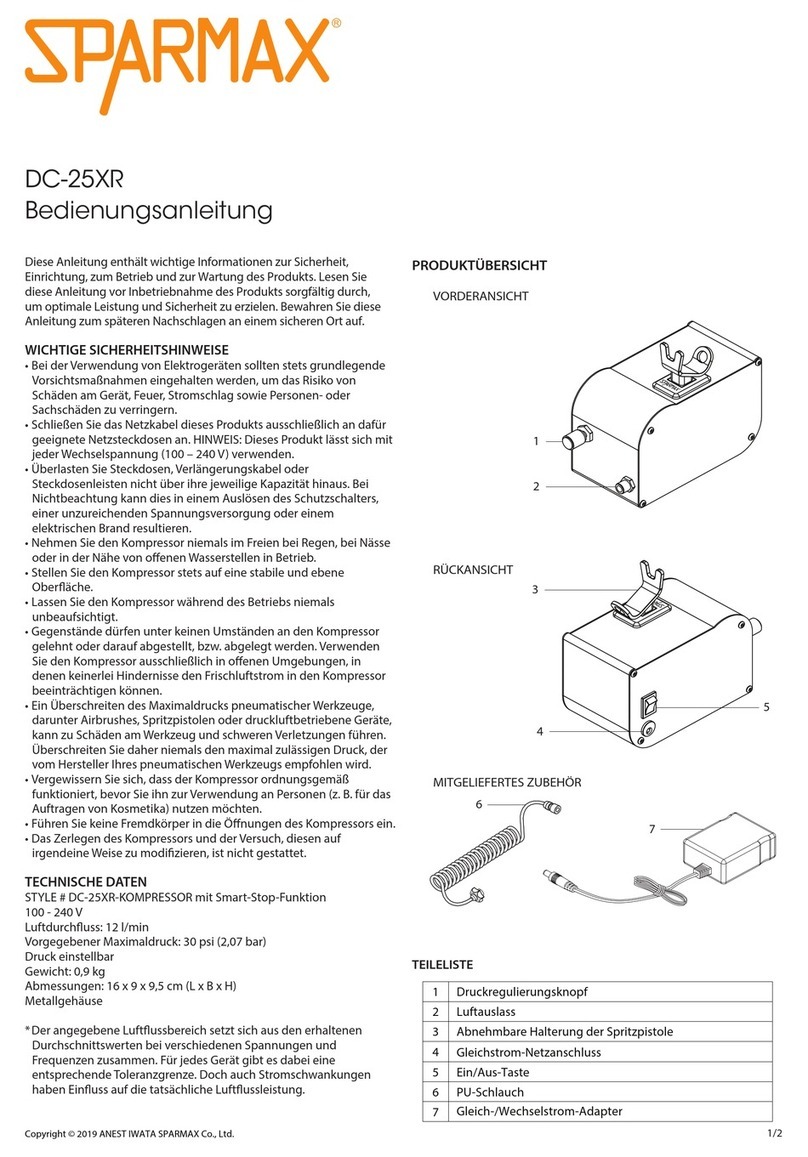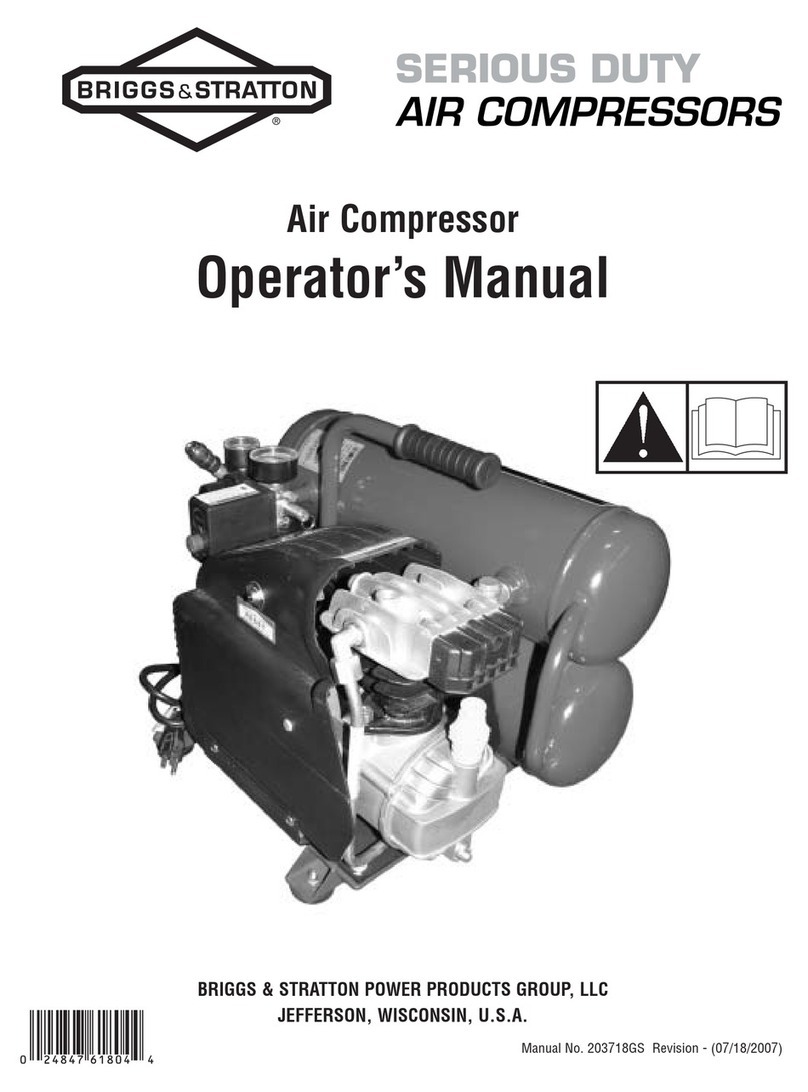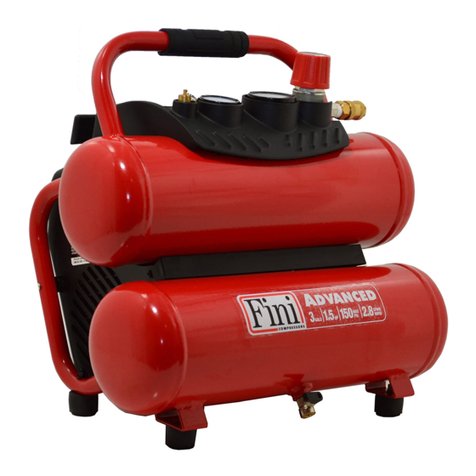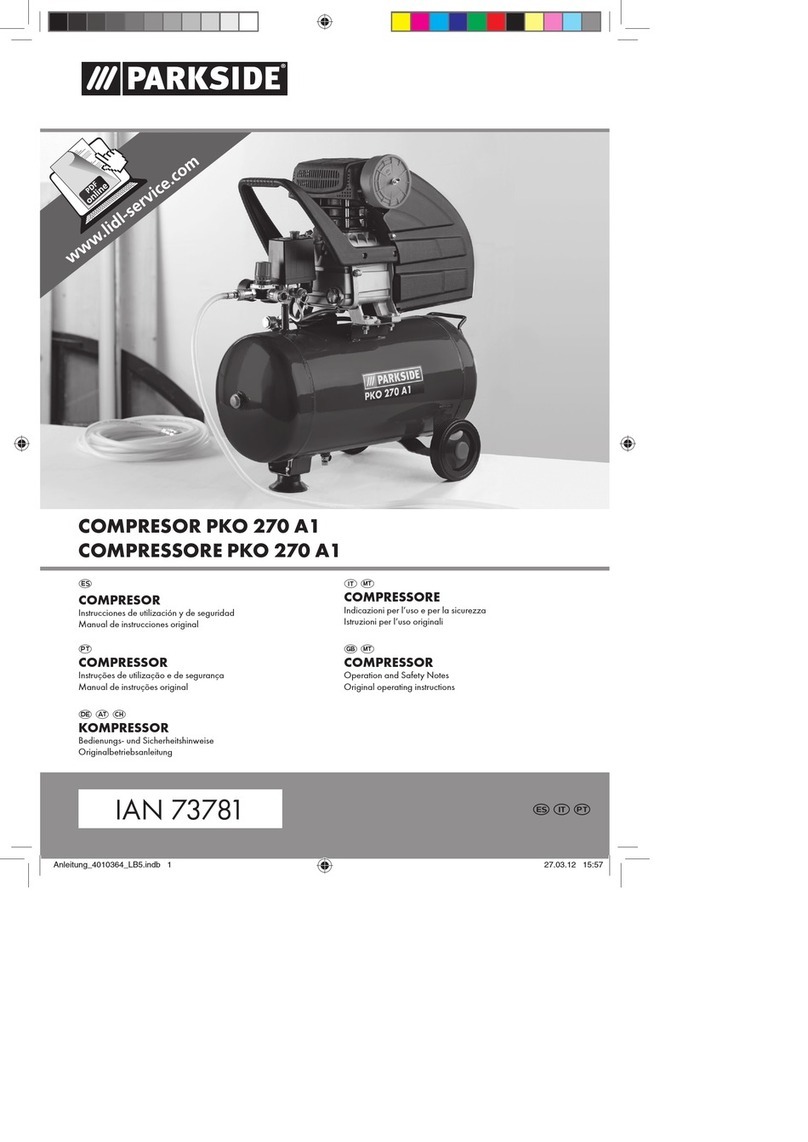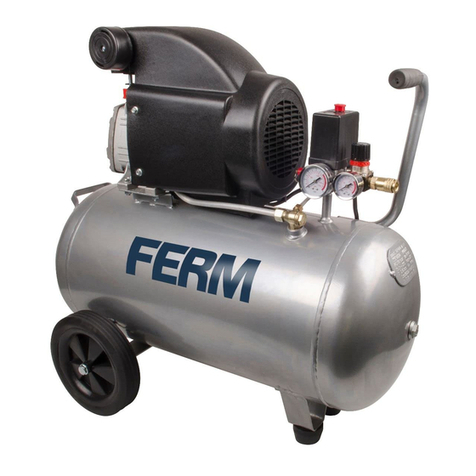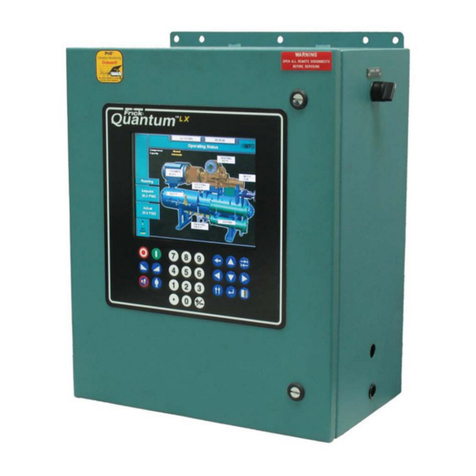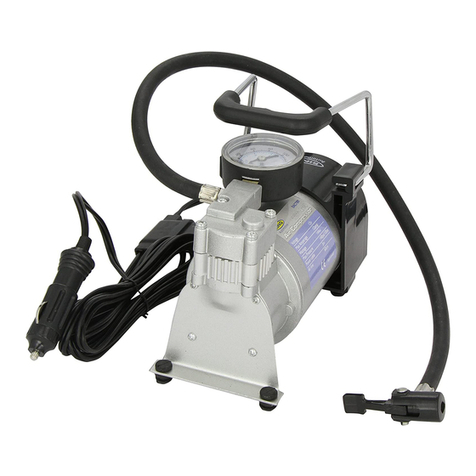EN
Draining the water system
Should it become necessary to completely drain the water system, use the
following procedures specic to the water cooled option you have.
Fresh water coolers (brazed plate heat exchangers):
1. Disconnect the inlet water line from the connection located at the
rear of the compressor.
2. Disconnect the water stop valve in the water outlet line of the
compressor.
3. Allow the system to completely drain.
Harsh water coolers (shell & tube heat exchangers):
1. Disconnect the inlet and discharge water lines from the
connections located at the rear of the compressor.
2. Locate the aftercooler and oil cooler. Remove the drain plugs
located at the bottom of the coolers.
3. Open the vent ports in the top of the aftercooler and oil cooler.
4. Allow the system to completely drain.
Adjusting the aftercooler trim valve
See the piping and instrumentation diagram provided separately from
this manual. The coolers are piped in a“parallel”water ow arrangement
with a manual trim valve controlling the ow through the aftercooler. The
aftercooler trim valve is factory set and should not need adjusting but if
disturbed use following procedure.
1. Close valve fully clockwise and then open two full turns.
2. With the compressor running loaded observe the package
discharge temperature on the controller display. It should be
approximately 8° C (15° F) above the water inlet temperature.
3. If the temperature is too high, open the valve ¼ turn and wait one
minute. If the temperature is too low, close the valve ¼ turn and
wait one minute. Repeat the incremental movements until the
desired temperature is reached.
4. Put a“Warning − Do Not Adjust”label on the valve or t a lock.
Water quality recommendations
Water quality is often overlooked when the cooling system of a watercooled
air compressor is examined.Water quality determines how eective the
heat transfer rate, as well as the ow rate, will remain during the life of the
compressor. It should be noted that the quality of water used in any cooling
system does not remain constant during the operation of the system.
Evaporation, corrosion, chemical and temperature changes, aeration, scale and
biological formations aect the water makeup. Most problems in a cooling
system rst appear as a reduction in the heat transfer rate, then in a reduced
ow rate or increased pressure drop, and nally with damage to the system.
Scale: Scale formation inhibits eective heat transfer, yet it does help
prevent corrosion. Therefore, a thin uniform coating of calcium carbonate
is acceptable on the inner surface. Perhaps the largest contributor to scale
formation is the precipitation of calcium carbonate out of the water. This is
dependent on temperature and pH level. The higher the pH value, the greater
the chance of scale formation. Scale can be controlled with water treatment.
Corrosion: In contrast to scale formation is the problem of corrosion.
Chlorides cause problems because of their size and conductivity. Low pH
levels promote corrosion, as well as high levels of dissolved oxygen.
Fouling: Biological and organic substances (slime) can also cause problems,
but in elevated temperature environments such as cooling processes they
are not a major concern. If they create problems with clogging, commercial
shock treatments are available.
To ensure good operation life and performance of the compressor cooling
system, the recommended acceptable ranges for dierent water constituents
are included below:
Integrated Dryer
Do not connect condensate drains common to other pressurized drain
lines in a closed circuit. Make sure the outow from the condensate drains
is unimpeded. Connect the condensate piping in such a way to ensure that
sound levels are kept to a minimum during drainage.
Ensure that all condensate is disposed of in a responsible manner, in
compliance with all applicable standards and regulations (local, state,
country, federal, etc.).
The ambient air around the dryer and compressor shall not contain solid
or gaseous contaminants. All compressed and condensed gases can
generate acids or chemical products which may damage the compressor or
components inside the dryer. Take particular care with sulphur, ammonia,
chlorine and installations in marine environments.
Environmental Limits
The standard compressor package is designed for the following conditions:
Indoors only
Area not considered to be a high dust area.
Ambient temperature range 2 to 46o C (35-115o F)
Ingersoll Rand oers the following options for xed speed compressors that
extend the environmental limits:
Outdoor modication
Low ambient option (-23 to 46o C / -15 to 115o F) at sea level
High ambient option (2 to 55o C / 35 to 131oF) at sea level)
High dust air lter
High dust package lter
•
•
•
•
•
•
•
•
Table 2: Acceptable Limits for Cooling Water Constituents
ACCEPTABLE MAXIMUM LIMITS
Substance Test Interval FreshWater (Brazed Plate Heat
Exchanger Dirty Water / Sea Water (Shell & Tube Heat
Exchanger)
Langelier Index (LI) Monthly 0 to 1 -0.5 to 2.5
Ammonia [NH3], ppm Monthly <1 <2
Ammonium [NH4-1], ppm Monthly <2 <5
Chlorides [Cl-], ppm Monthly <80 <1000
Copper [Cu], ppm Monthly <0.01 <0.5
Dissolved Oxygen (DO) [O2], ppm Weekly <0.1 <3
Iron + Manganese [Fe + Mn], ppm Monthly <0.3 <2
Nitrate [NO3-], ppm Monthly <100 <125
Oil & Grease, ppm Monthly <5 <5
Silicon Dioxide (silica) [SiO2], ppm Monthly <30 <100
Sulfates [SO4-2], ppm Monthly <70 <250
